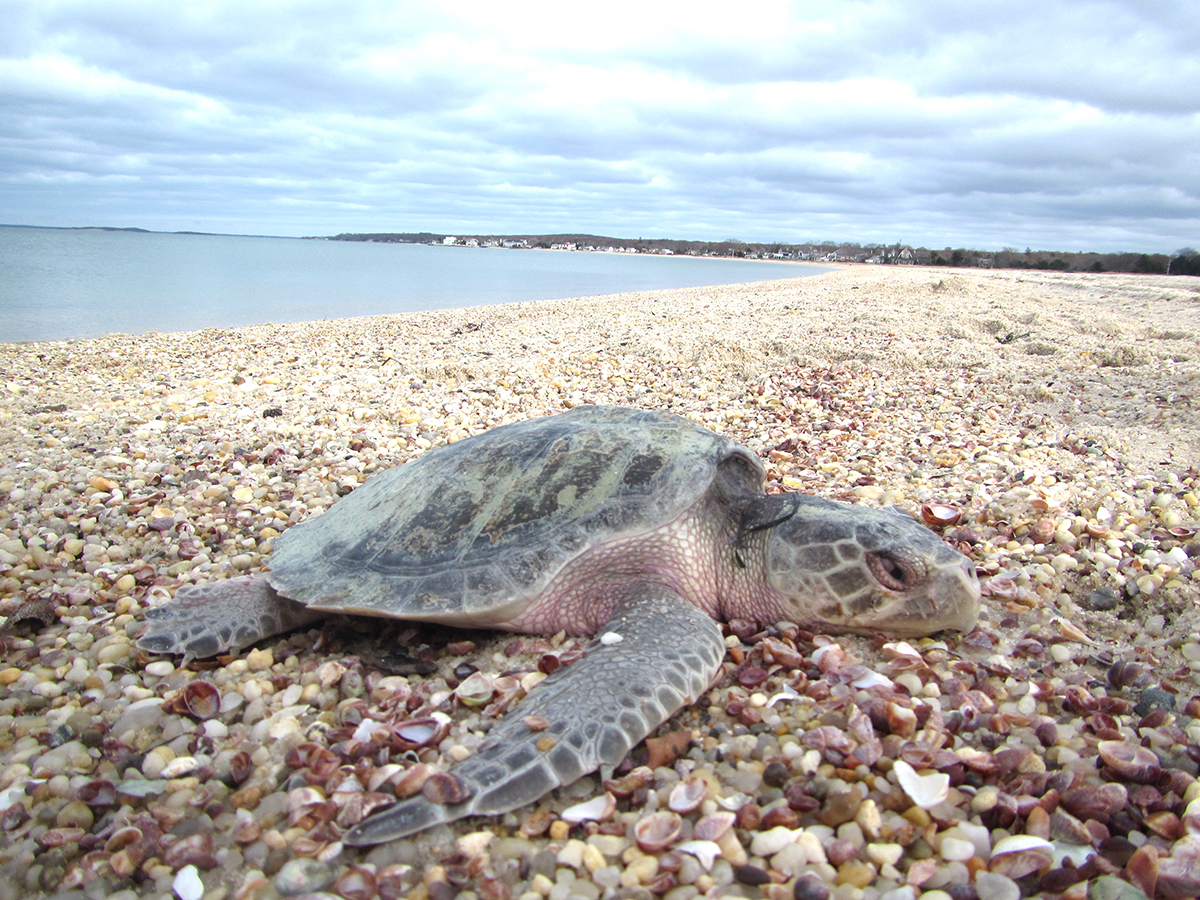
 press-releases
press-releases 

The Cold Stun Patrol Team of Riverhead’s New York Marine Rescue Center will soon begin patrolling local beaches in search of cold-stunned sea turtles. More than 200 volunteers will walk the shoreline focusing on north-facing beaches after blustery days.
Anyone can help save a sea turtle, said Maxine Montello, rescue program director at NYMRC. If a “rock” is found on the beach now through the winter and closer inspection reveals it’s a turtle, NYMRC says, it’s important to call the Stranding Hotline as soon as possible at 631-369-9829. The hotline is manned 24 hours a day, seven days a week. Calling quickly could save the sea turtle’s life.
Ms. Montello explained that, as cold-blooded reptiles, sea turtles can’t regulate their own body temperature. When the air temperature drops in the fall, so does the water temperature. Once the water reaches 55 degrees, sea turtles that haven’t left for warmer areas become susceptible to cold-stunning.
The cold water slows the sea turtle’s movements, debilitating them. Cold-stunned sea turtles can’t swim. They wash ashore with the winds and tides.
“The faster we find a cold-stunned sea turtle, the better chance that sea turtle has of surviving,” Ms. Montello said.
Last year, NYRMC rescued a record 94 stranded, cold-stunned turtles in eight weeks. Most were critically endangered Kemp’s ridley turtles. Last year also saw 41 stranded Atlantic green sea turtles — the highest number since 1980.
Ms. Montello said NYRMC started its volunteer Cold Stun Patrol Team program in 2017 to assist its five dedicated staff people. The volunteer list has grown from less than 20 to as many as 200. She said they are key to saving sea turtles by maximizing the territory the organization can cover. According to Ms. Montello, “NYRMC hosts two [volunteer training] programs. Level one is a lecture where volunteers learn how to identify species and general information [and] gives you the skill set to know what to do.” Level two volunteer training, she said, is for those more interested in working in the field. It’s an in-person program where volunteers learn how to spot and move a stranded sea turtle. They work closely with the NYMRC team. She said level two requires more of a commitment.
“One volunteer found nine sea turtles on his own last year,” Ms. Montello said. “We tend to recruit people who find turtles — those people want to learn [about the program and the rescued turtle] once they find one.”
She said the experience is extra special when the volunteers and the organization participate together in the release of a rehabilitated sea turtle.
The three local species most likely to strand on Long Island are Kemp’s ridley, Atlantic green and loggerheads. The first two species weigh up to 5 pounds and are often juvenile animals. They blend in with the sand, looking like rocks. The loggerheads are larger, 20 to 50 pounds, with more orange coloring. High tides and winds push them onto the beach. People often find them amid piles of seaweed.
Ms. Montello said time doesn’t allow figuring out if the stranded animal is cold-stunned or dead, noting, “We treat all animals as alive once the call comes. These animals are in critical shape.”
She said they regulate the animal’s heart rate with fluid therapy and emergency medicines. “Some come in at one beat per minute, when it should be 30-plus beats,” Ms. Montello said. Once the sea turtle’s heart rate and temperature are stable, the next steps are planned and carried out.
Ms. Montello explained that when someone calls the stranding hotline, they speak with a biologist who will ask questions. They will ask for photos to try and identify the species. She said they will also want details about the location, best access point and GPS coordinates. This way the team can find the turtle as quickly as possible. If the animal is in or close to the water, she said, it’ll need to be moved higher up on beach. “Turtles strand during incoming tide, so as it goes back out, they could be pulled out,” she explained. If the animal is upside down, she added, it should be put back shell-side up, so no water pools in its lungs. “Once on the beach, they are exposed. The shorter the time on the beach, the higher their survival rate is,” she said.
Ms. Montello also cautioned against what not to do: “People try to warm them up,” she said, which is dangerous. “We warm them up slowly; done too quickly, the turtle will show signs of neurological damage. Its electrolytes crash, causing severe dehydration.”
If there’s no cell service on the beach where a stranded turtle is found, she said, the animal should be left in the field rather than transported in a car. “Mark the animal on the beach with a piece of driftwood, move it to well above the high tide line and call when you have service. It’s more stressful on the animal when they are brought home,” she said. Lastly, she warned not to put stranded sea turtles back in the water at this time of year.
In addition to calling the hotline or joining the volunteer patrol program, people can help save stranded sea turtles by making donation through nymarinerescue.org.
24World Media does not take any responsibility of the information you see on this page. The content this page contains is from independent third-party content provider. If you have any concerns regarding the content, please free to write us here: contact@24worldmedia.com